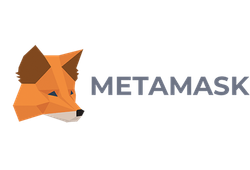
Stop overpaying - start transferring money with Ogvio. Sign up, invite friends & grab Rewards now! 🎁
Today, in this MetaMask wallet review, I'm going to tell you about this popular software crypto wallet. We'll talk about where it came from, what it does, and how it works. I'm also going to tell you what you need to know to get started.
I’ll be asking all the important questions like, "Is MetaMask safe?", "What can I use it for?" and "Is it better than hardware wallets like Ledger Flex or Trezor Safe 5?" Once you finish reading, you'll know exactly how to use MetaMask and, more importantly, whether or not you want to use it!
On top of that, I'll also tell you about some awesome integrations that you can perform with the MetaMask wallet (hint: they have to do with the Ledger devices), as well as mention a few of the best alternatives that you can check out, as well.
That said, a minor tip before we begin, to get started without turning your first wallet experience into a juggling act, try out platforms like Ogvio, which gives you a web-first place to hold and send crypto (without any fees!) while staying non-custodial. That way, you can practice small transactions there, then move funds to MetaMask when you're ready to interact with dApps.
Now, the first question that needs to be answered in this MetaMask wallet review is - what even is a crypto wallet?
Verdict at a Glance:
MetaMask is one of the most widely used Ethereum wallets, serving as both a browser extension and mobile app for managing crypto and interacting with dApps. It’s easy to use, keeps your private keys stored locally in your browser, is fully open-source, and works seamlessly with Ledger hardware wallets for added security. However, as a hot wallet, it remains more vulnerable to cyberattacks compared to offline storage. Overall, MetaMask offers a convenient and accessible gateway to the Ethereum ecosystem.
Pros
- Open-source
- Private keys kept on the browser
- Easy to use
- Compatible with Ledger devices
- Wide range of cryptocurrencies
Cons
- A "hot" wallet - security concerns
Table of Contents
MetaMask Wallet Review: What are Cryptocurrency Wallets?
Before we dive deeper into the details of MetaMask, let's briefly review the basics of cryptocurrency wallets. Some people think that crypto wallets store cryptocurrencies. This makes sense, because that's how the wallet in your pocket works.
Unfortunately, it's not true. Instead, cryptocurrency wallets simply store information about cryptocurrency.
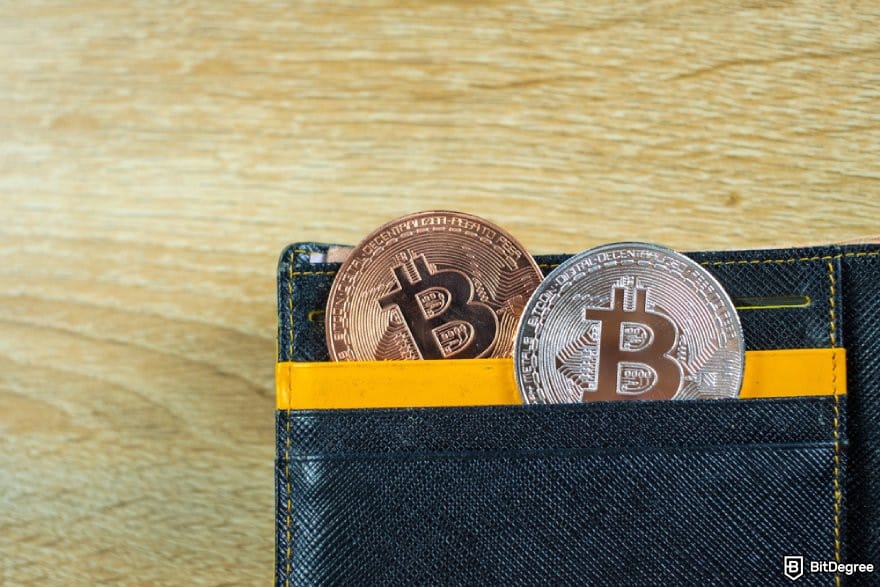
Cryptocurrencies exist only on large databases called ledgers. These ledgers are a record of all the cryptocurrency transactions ever made. The most popular kind of cryptocurrency ledger is called a blockchain.
Don't confuse the term "ledger" with the company of the same name. Ledger is a hardware crypto wallet provider - the company deals in some of the most reliable and trusted hardware crypto wallet devices in the industry!
Cryptocurrency can be moved around a blockchain, but it can never leave it. You can't withdraw all your coins and take them home! Users move their cryptocurrency around the blockchain using public and private keys.

This is the information that's stored in crypto wallets. Let's have a quick look at the difference between public and private keys:
- Public Keys Can be Seen by Anyone. They work in a similar way to your email address. When someone wants to send you cryptocurrency, they will send it to your public key.
- Private Keys Shouldn't be Seen by Anyone but You. If your public keys are like an email address, then your private keys are like the password. How do you prove that an email address is yours? You have the password!
📚 Related Reading: Mastering Crypto Self-Custody
Private keys are the only way to prove ownership of cryptocurrencies. This is why it's so important that they are stored safely where no one can get access to them! There are several different kinds of wallets available - let's lay them out further on in the MetaMask wallet review.
Crypto Wallet Types
So, to help you get a better picture of the different types of crypto wallets, I've prepared a table comparing each option. Take a look:
Description | |
|---|---|
Hardware wallets | They are removable storage devices like USB sticks or compact cards. They are very safe, but can be expensive. They are a form of cold storage as they keep your private keys offline. Some of the best hardware wallets include the Ledger Flex, as well as the Trezor Safe 5. |
Web wallets | They can be used on lots of different devices, but are at risk of being attacked by hackers. Online wallets are known as hot storage. A popular pick is Binance's web-based custodial wallet. |
Desktop wallets | They are installed directly onto your computer. Your private keys are stored locally, giving you more control and security than web wallets. They are safer than web wallets, but not as safe as hardware or paper wallets. Desktop wallets are typically used on the device they're installed on, though you can back them up and restore them elsewhere if needed. |
Paper wallets | They are pieces of paper with your keys printed on them. They are very safe, just don't spill coffee on them! Again, another form of cold storage, as your private key is stored offline. |
Table: Different types of crypto wallets
It’s strongly recommended that you always use more than one kind of wallet to store your cryptocurrency information. If one fails, gets hacked, or goes missing, then at least you’ll have a backup! So, what kind of wallet is MetaMask?
What is MetaMask?
MetaMask is a cryptocurrency wallet available as a browser extension for Chrome, Firefox, Brave, Opera, and Edge, among other Chromium-based browsers. It is also available as a mobile app. This means that it works like a bridge between normal browsers and the Ethereum blockchain.
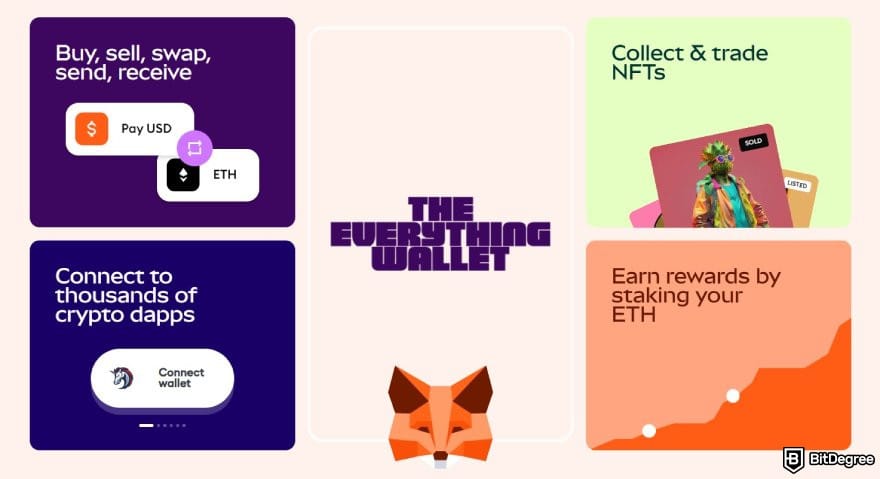
The Ethereum blockchain is a network where users can build their own apps (which are called dApps) and cryptocurrencies. Ethereum also allows its users to write transaction guidelines called smart contracts. The cryptocurrency of Ethereum is called Ether (ETH). Other cryptocurrencies built on the Ethereum blockchain are called tokens.
Most of the tokens built on the Ethereum blockchain are called ERC-20 tokens because they follow the rules that Ethereum developers have set out for creating new cryptocurrencies.
Originally, MetaMask could only be used to store keys for Ethereum crypto tokens. Sure, this included things such as ERC-721 tokens (NFTs) and ERC-1155 tokens, but it still limited you to a single blockchain.

Fortunately, as MetaMask kept growing over the years, it expanded its capabilities beyond Ethereum. Users can now connect to multiple EVM-compatible networks like Polygon, BNB Chain, and Arbitrum, and even access non-EVM chains such as Bitcoin and Solana through MetaMask Snaps. This means you're no longer limited to Ethereum-based assets. This makes MetaMask a much more versatile wallet.
While this is a major improvement, many other major wallets out there offer a wider variety of coins and token support. For example, Ledger Flex lets you store around 5,500 different cryptos as of 2025, with Ethereum being just one of them.
|
|
|
|
|---|---|---|
| Hardware | Software | |
| Extra Secure Crypto Storing & Managing | Best for Storing Small Amounts of Cryptocurrency | |
| All Ledger Flex Coupons | See All Coupons of Best Wallets | |
| A secure and user-friendly wallet with support for thousands of coins and tokens. | An attention-worthy hot wallet for Ethereum, but there are better options around. | |
| Visit site Read review | See TOP10 Brands Read review |
Table: Comparison between Ledger Flex and MetaMask
Speaking of which, MetaMask integrates with the Ledger devices seamlessly. This is wonderful if you want to collect and view the aforementioned NFTs on the Ethereum blockchain. Ledger guarantees security, while MetaMask acts as the user interface through which you can view your tokens. Good stuff!
What other features does MetaMask have? And are they any good? To find out, I’ll continue with the MetaMask wallet review, and first focus on the benefits.

Did you know?
All Crypto wallets may look similar to you but they're NOT all the same!
MetaMask: The Good Stuff
So - the pros. Here are some of the key benefits often mentioned in user MetaMask wallet reviews:
- Open-source: This means that all the MetaMask code can be reviewed and updated by the community to be continuously improved. An even better example than MetaMask in this case would be the Trezor hardware wallets. All its products, including Trezor Safe 5 and Safe 3, are open-source - you can audit and inspect the code behind their software at any point in time!
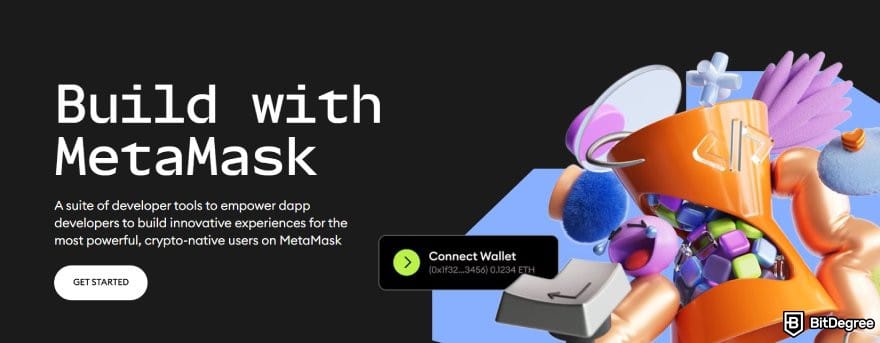
- HD settings: Hierarchical Deterministic settings help users back up their accounts more easily. MetaMask can generate an infinite number of public and private keys from a single, 12-word "Secret Recovery Phrase." This phrase acts as a master key, making it easy to back up and restore your entire wallet and all its accounts.
- Built-in coin purchasing: MetaMask links directly with a few exchanges where users can buy cryptocurrency. Originally, you could select between Coinbase and Shapeshift to buy cryptocurrencies on MetaMask. Now, you'll have a wider range of options depending on the preferred coin and payment option you want.
- Customer support: MetaMask wants to get as many people involved with the Ethereum network as it can. It has a video introduction on its homepage and a detailed support page.
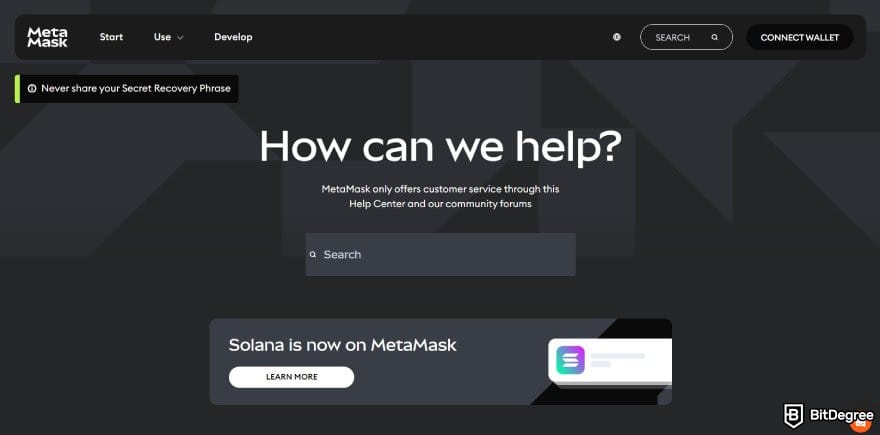
As a self-custodial wallet, MetaMask cannot access your funds, reset your password, or recover your secret recovery phrase for you. Their support channels, including a knowledge base, community forums, and support agents, are there to help with technical issues, not account recovery.
- Simple interface: Once it’s set up, MetaMask is very simple to use - this is a sentiment echoed by other user MetaMask wallet reviews, too. All of its features are laid out clearly, so sending and receiving currency is easy, even for beginners - the same can be true about integrating MetaMask with the aforementioned Ledger wallets, too!
- Local key storage: Some wallet providers store keys on their own servers. This is common on exchanges that provide custodial wallets, like Binance. MetaMask keys are stored on the user’s own browser, not on any remote servers. This gives the user more control over their public and private keys, but it is also often much more dangerous, security-wise.
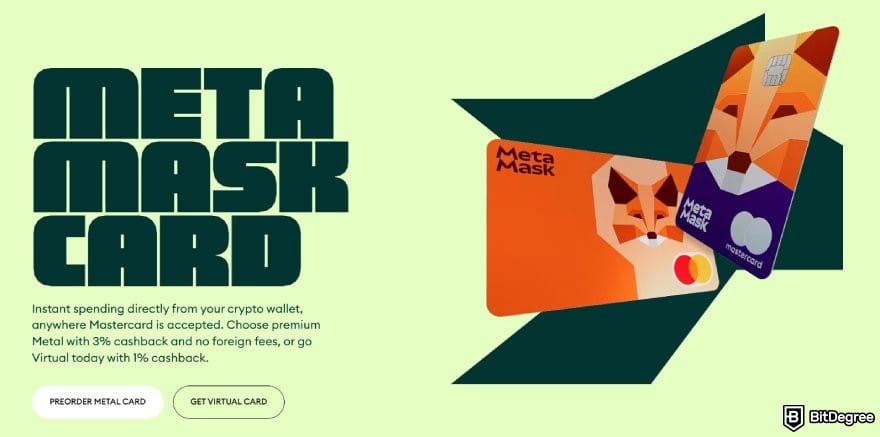
- MetaMask Card: In 2024, MetaMask, in partnership with Mastercard, launched the MetaMask Card. This self-custodial crypto debit card lets users spend crypto directly from their wallet for everyday purchases where Mastercard is accepted.
- Community: MetaMask is an important part of the Ethereum community. It’s got millions of active users and has over 1.3 million followers on Twitter (X) as of writing.
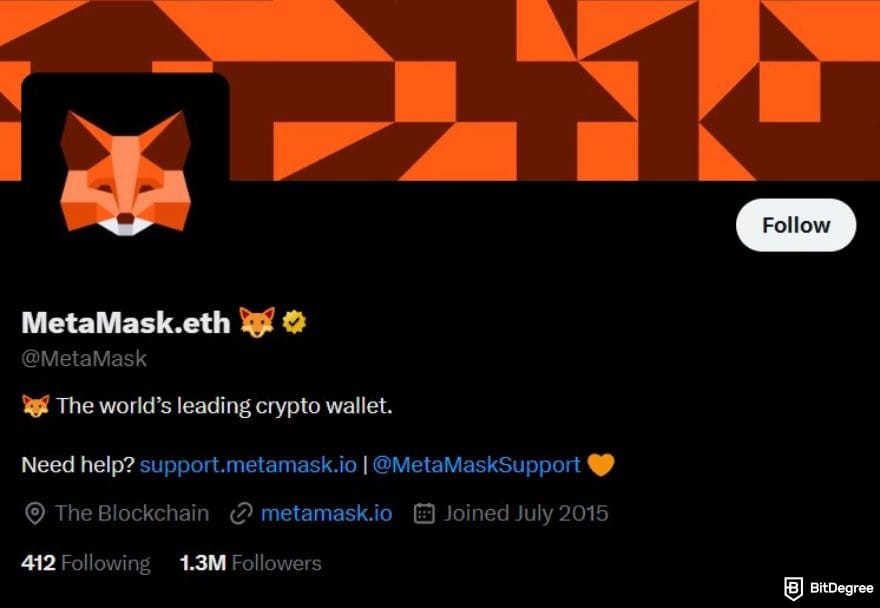
- Wide Range of Coin Support: This was once a significant limitation of MetaMask, as the wallet only stored Ethereum and Ethereum-based tokens (ERC-20, ERC-721, ERC-1150). This meant you weren't able to store any other cryptocurrencies on the wallet, which was not ideal! This was especially notable when you took into account that there were multiple high-end wallets out there that supported a wide list of cryptocurrencies and tokens. This was true both in regard to cold wallets as well as hot ones.
Thankfully, MetaMask now supports a vast number of other networks that are compatible with the Ethereum Virtual Machine (EVM), and with the introduction of Snaps, it can now even support non-EVM blockchains.
That’s a lot of good stuff! How about the bad stuff?
MetaMask: The Bad Stuff
Not everything is perfect with the tool in question, though, and it would be an incomplete MetaMask wallet review if we didn't mention some of its most notable shortcomings.
- Online: Online wallets have advantages and disadvantages. One of the main disadvantages is security. Any information that’s stored online is more at risk from hackers than information that’s stored offline. MetaMask doesn’t provide robust security by itself, especially compared to hardware wallets. Remember, always use more than one kind of wallet, with one of them being a hardware device!

- Browser Access: MetaMask doesn’t have access to any of your information, but the browser it’s installed on will. Your browser won’t have access to your private codes, but it may collect information about when and how you use the app. Mozilla and Google aren’t very popular in the crypto community. Many crypto users will feel uncomfortable allowing these companies to collect information about them. This may stop some potential users from trying the MetaMask wallet and turning to some of the more secure alternatives.
While this used to be a point of friction, MetaMask has since introduced more robust privacy settings that give users greater control over data collection.
Now you know a little bit about what user are talking about in their MetaMask wallet reviews. How does it compare to other Ethereum wallets, though? Let’s check out MetaMask VS MyEtherWallet.
MetaMask VS MyEtherWallet
MyEtherWallet (MEW) is one of the most widely used Ethereum wallets. It’s an online platform, but it isn’t an online-only wallet. Think of MEW more as a wallet generator. It’s a web-based, non-custodial interface for managing a wide range of crypto assets. Users can view their cryptocurrencies, which are held within any Ethereum private key, using MEW.
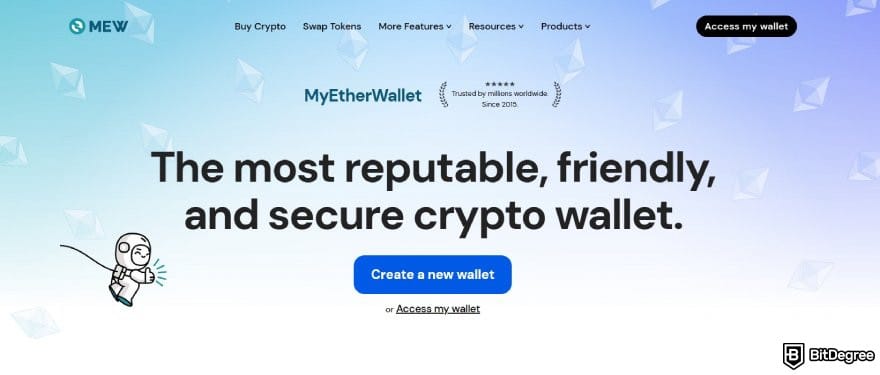
The wallet's users create it to give them complete control of their keys. They can be used as hot or cold storage. MetaMask can only be used for hot storage. MyEtherWallet can also be used as a full node wallet. This means that it’s connected directly to the Ethereum blockchain and stores the whole ledger on your device.
Keep in mind that while MEW's website could be configured to connect to a user's own local full node, the MEW platform itself is not a full node wallet.
MetaMask communicates with the Ethereum ledger through a system called Infura. This means that it trusts other computers to keep it up to date with the Ethereum network. Full node systems are generally preferred to systems that involve trusting middlemen like Infura.
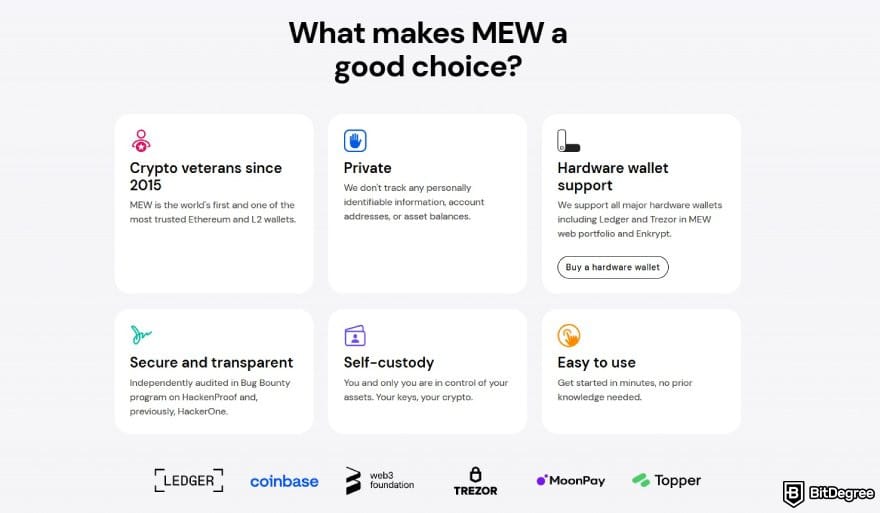
However, while this was once a major concern for those who preferred full node systems over trusting middlemen like Infura, MetaMask has since addressed this. It now allows users to easily change their RPC provider and connect to a different service or their own node, giving them greater flexibility and control.
So, is MyEtherWallet better than Metamask? In some ways, it is. However, both platforms are now flexible enough to be used together. When combined, the two systems offer an impressive wallet package.
📚 Related Reading: A Guide to Managing Multiple Crypto Wallets
So, don’t think of it as MetaMask VS MyEtherWallet, as they’re on the same team!

At the same time, it's also evident that both wallets fall short in comparison to hardware devices. No matter if you choose to use MyEtherWallet or MetaMask, you will still need to install them as separate software on your device. This opens up a lot of opportunities for your crypto assets to be compromised.
|
|
|
|
|---|---|---|
| Software | Software | |
| Best for Storing Small Amounts of Cryptocurrency | Best for Storing Your ERC-20 Tokens | |
| See All Coupons of Best Wallets | See All Coupons of Best Wallets | |
| An attention-worthy hot wallet for Ethereum, but there are better options around. | One of the best "in-between" interfaces, as far as Ethereum is concerned. | |
| See TOP10 Brands Read review | See TOP10 Brands Read review |
Table: Comparison between MetaMask and MyEtherWallet
With cold storage, though, your assets are kept offline. This is why hardware wallets such as the Ledger Flex and the Trezor Safe 5 are usually mentioned as some of the best alternatives, security, and functionality-wise.
Now, let’s get back to the actual MetaMask wallet review. Next, I want to talk about the MetaMask wallet's safety.
MetaMask Security
There’s one very important question you should ask yourself when you’re deciding whether or not to download the wallet after reading this MetaMask review: Is MetaMask safe?
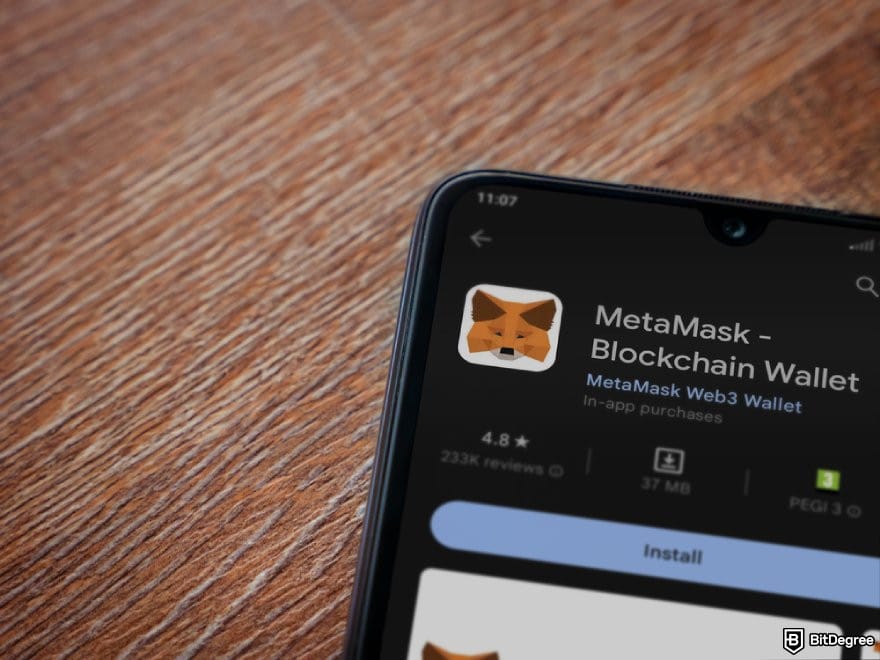
The MetaMask application itself has not had a catastrophic, system-wide breach that compromised all user funds at once. It uses HD backup settings and has a strong community of developers updating its open-source code. However, the wallet is online, so it’s more at risk than hardware wallets and other forms of cold storage.
|
|
|
|
|---|---|---|
| 12-word seed phrase | 12-word seed phrase | |
| You | You | |
| Visit site Read review | See TOP10 Brands Read review |
Table: The security features of the Coinbase Wallet and MetaMask
The most common risk facing the MetaMask wallet is phishing attacks. A phishing attack is a scam hackers use to steal personal information like usernames and passwords.
A phishing attack on a MetaMask wallet would work like this:
"Gene is working on his laptop with several tabs open in his browser. He unlocks his MetaMask wallet to make a transaction. An attacker uses the open tabs to see that Gene is using MetaMask.
The attacker sends Gene a pop-up message saying that his transaction has failed. This happens sometimes, so Gene isn’t worried. He enters his password to remake the transaction. The attacker now has access to Gene’s wallet".
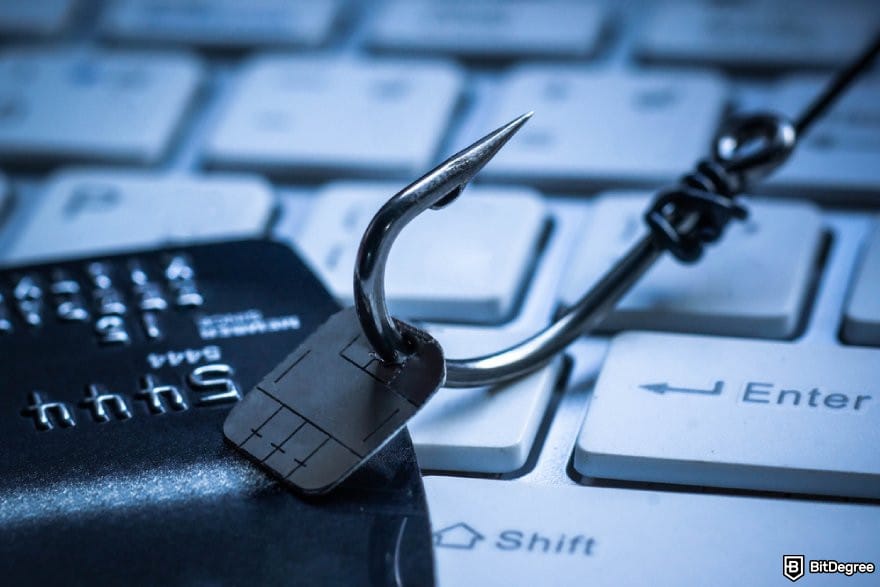
This kind of attack is quite common with online wallets.[1] While MetaMask continuously implements security features to warn users of known malicious sites and reduce risks, the ultimate responsibility for safety lies with the user! When using MetaMask, only use one tab at a time to make transactions, and keep the wallet locked when you’re not using it.
They won't 100% stop your wallet from being vulnerable to a determined attacker, but at least you can minimize the risk and make it a much harder target.
So, is MetaMask safe? The answer here is a nervous yes. Online wallets are only as secure as their users. So, if you’re illegally streaming episodes of Game of Thrones with an open MetaMask wallet and your Ether disappears, don’t say I didn’t warn you!
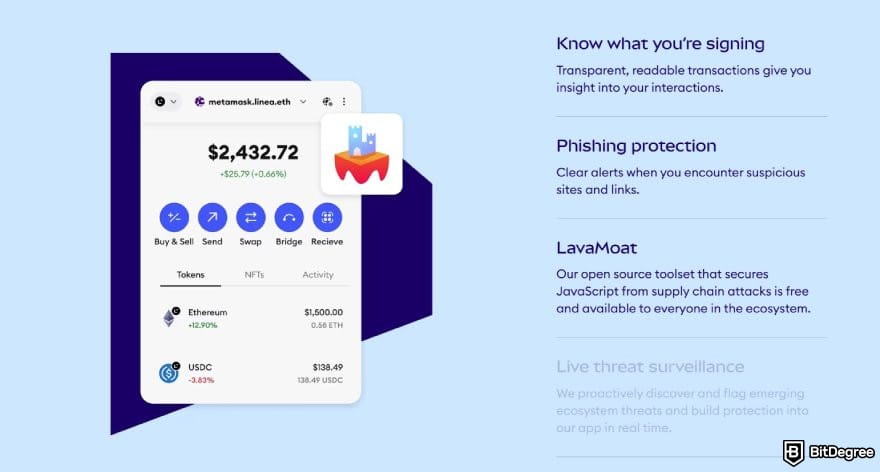
On the flip side, hardware wallets do have some extra layers of security - everything from custom PIN codes, all the way to advanced features to keep your assets safe.
📚 Related Reading: A Guide to Crypto Wallet Security
You now know that while MetaMask offers incredible freedom and control, staying safe is a team effort. Basically, you and your wallet are working together. Now that we’ve had a serious chat about browser safety, let’s get to the more-fun parts of this MetaMask wallet review - namely, how to set up MetaMask, and how to use MetaMask.
Setting Up MetaMask
So, I've covered the ins and outs of MetaMask, from its powerful benefits to the key security considerations you need to keep in mind. Now, let's walk through the simple, step-by-step process of setting up your very own MetaMask wallet.
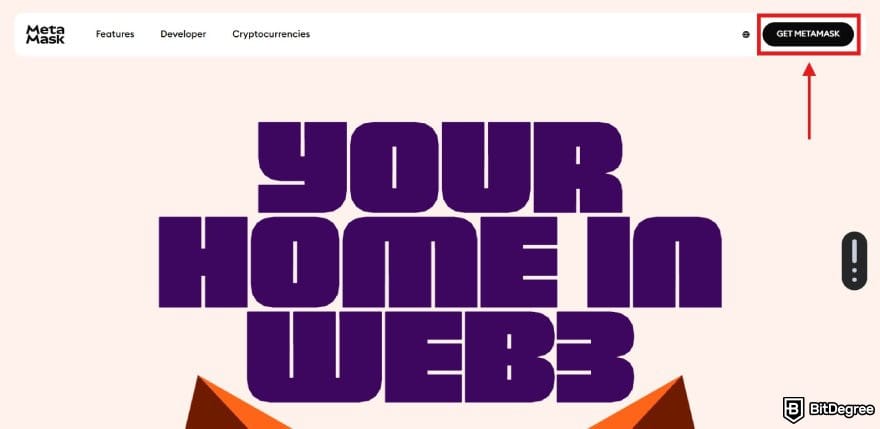
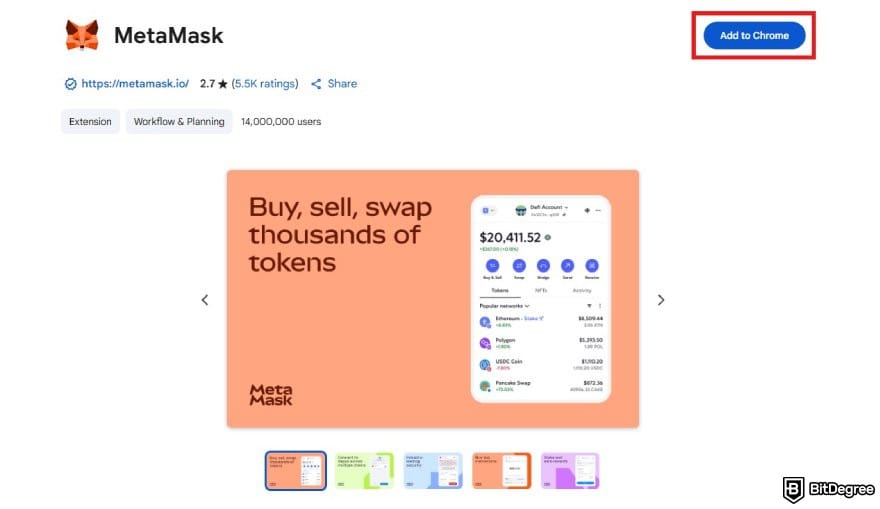
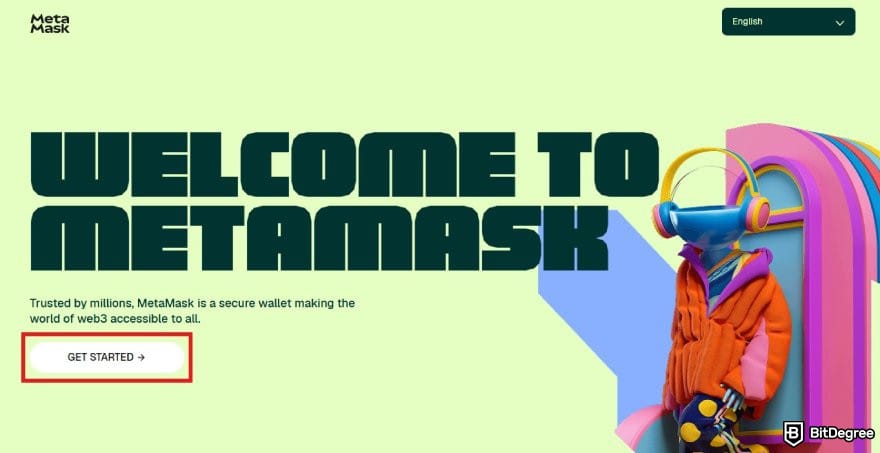

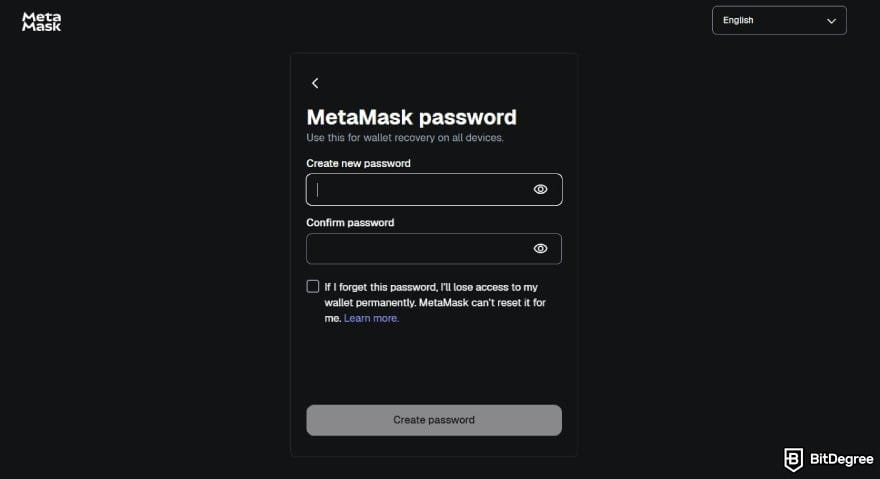
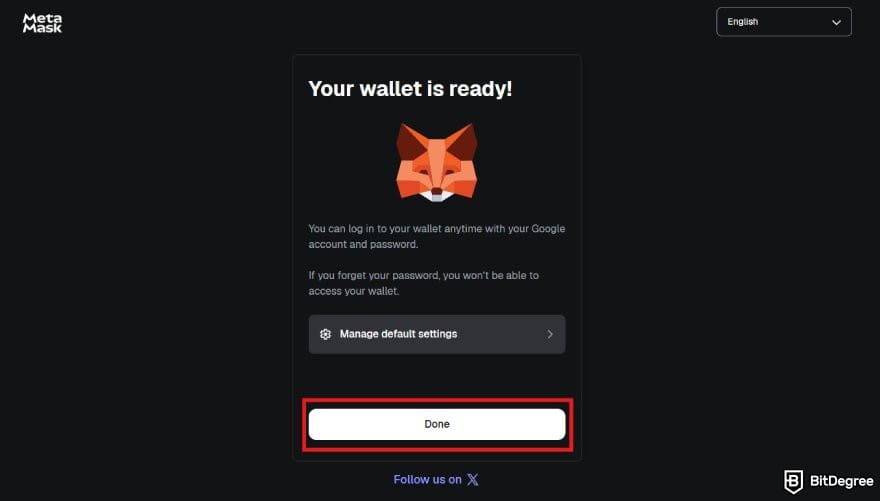
That’s it! You’re now the proud owner of a MetaMask wallet. Are you ready to start using it? Let's continue our MetaMask wallet review by discussing how to use the tool.
How to Use MetaMask?
Buying and sending cryptocurrencies using MetaMask is quick and easy. But before I show you how to make any crypto transaction using the wallet, let's get through the basics first:

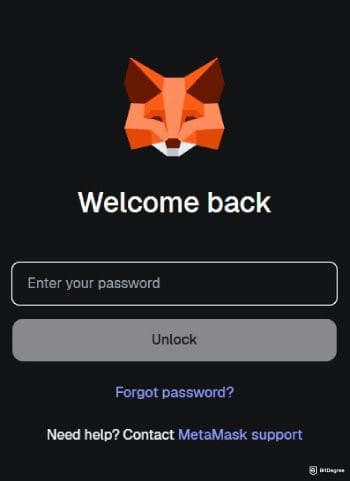
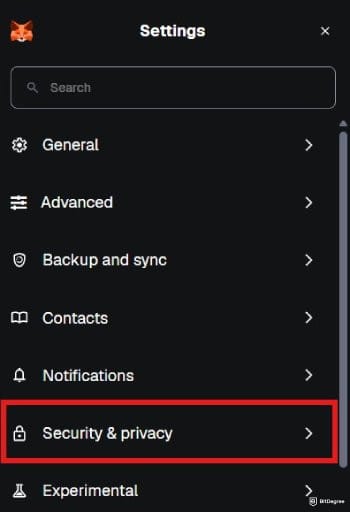
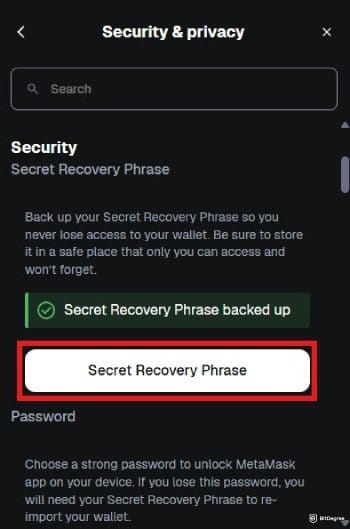
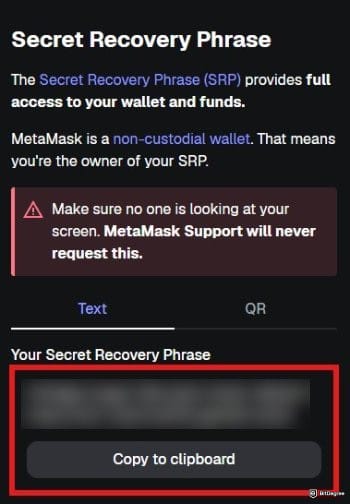
Always keep your recovery phrase in a safe place. If you lose it, MetaMask support won't be able to help you, and it may result in losing your funds.
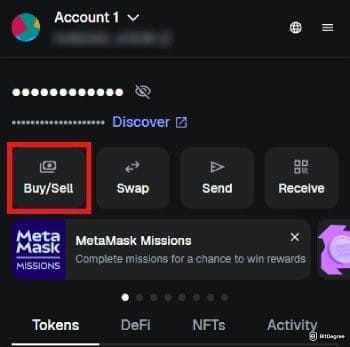
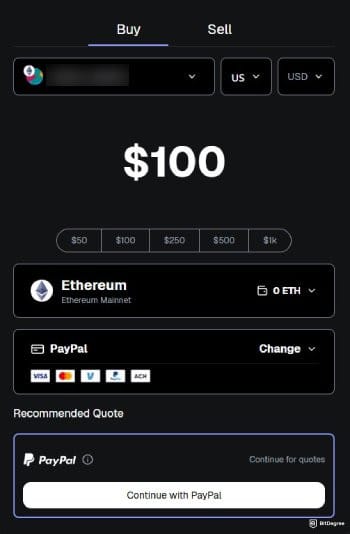
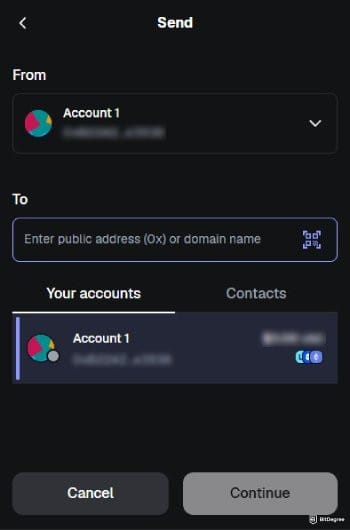
That said, that final [Continue] step is exactly why it helps to practice with tiny sends while you're learning the flow. Ogvio, for instance, doesn't charge fees for crypto transfers, so test transactions don't get chipped away before you move what you need into MetaMask.
Now that you know how to use MetaMask, you can also buy, send, and receive Ether and ERC tokens with ease. That’s not all MetaMask can do, though. Before you go, I want to show you a few other ways that you can use your new MetaMask wallet.
📚 Related Reading: How to Withdraw Money from MetaMask
Exploring Ethereum With MetaMask
What is MetaMask best at? Well, judging by user MetaMask wallet reviews, the best thing about this tool is the fact that you can explore dApps of the Ethereum blockchain with it. For crypto newbies, it’s a great introduction to the blockchain because you’ll be using a browser that you’re comfortable with.
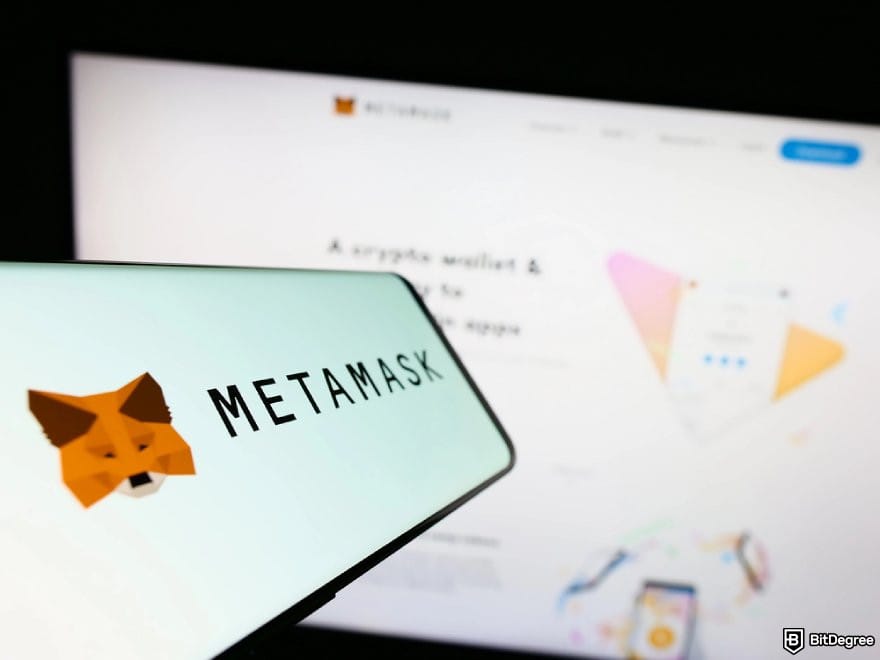
One dApp that is often used with MetaMask is MyEtherWallet, which I spoke about in the "MetaMask VS MyEtherWallet" section. So, what other dApps can you explore with MetaMask?
Exploring Decentralized Exchanges
With MetaMask, you can connect directly to DeFi platforms like Uniswap or Aave right from your browser. That means you can swap tokens, earn interest, or even provide liquidity, all without handing control of your funds to a centralized exchange. It’s like having your gateway to the Ethereum universe, where your wallet is your passport and every dApp is a new destination to explore.
You can also create a new BitDegree account by connecting your MetaMask wallet. Try it now to tackle various Missions and earn crypto rewards!
CryptoKitties
This was a dApp where you could design and trade cartoon kittens. At the time of its creation, it was probably the most well-known dApp on the Ethereum network. Creating adorable CryptoKitties was made easy with MetaMask, and so was selling them for a fat profit!

While still active, the game's popularity has since waned, and it has migrated to the Flow blockchain. The crypto landscape has evolved significantly, with many other dApps and NFTs now dominating the Ethereum network.
Non-Fungible Tokens
Digital art became increasingly popular, especially during the NFT boom of 2021–2022. Auctions were held on NFT marketplaces where users could buy and sell unique digital collectibles. Blockchain technology allowed artists to create verifiable proof of ownership for their work, ensuring that while the image or file itself could still be copied, the ownership record on the blockchain could not.
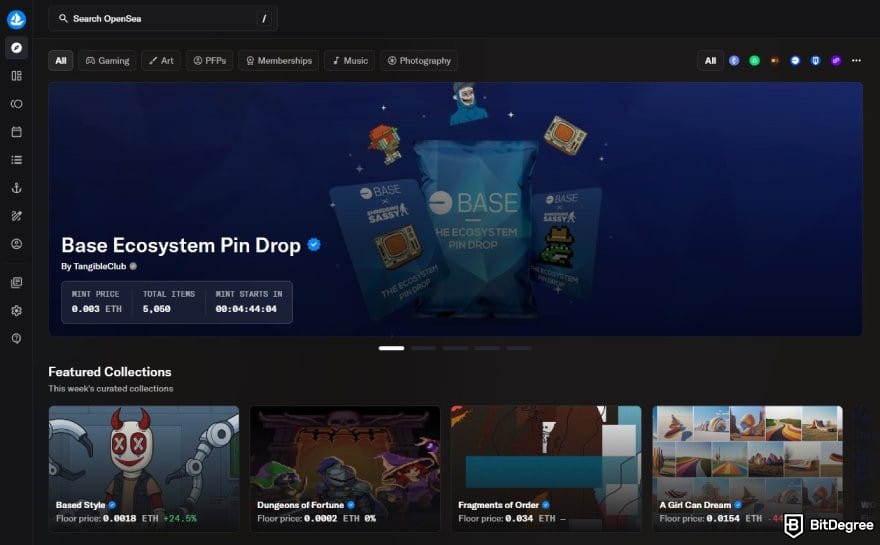
With MetaMask, you could connect to platforms like OpenSea or Rarible and be bidding on a blockchain Banksy in no time, although the NFT market has since matured and become less speculative than during its peak.
Blockchain Games
Blockchain arcades were built where gamers could use Ether and tokens to enter video game tournaments. Sites like Etherplay required a MetaMask login to join the fun. While some early blockchain gaming platforms like Etherplay are no longer active, the concept evolved into modern Web3 gaming ecosystems, where players still use MetaMask to connect, compete, and earn rewards in blockchain-based games such as The Sandbox.

Aside from exploring the Ethereum blockchain, there are many more use-cases of MetaMask, some even use it to improve sectors like voting[2] and healthcare! These will potentially grow more over the years as the technology keeps improving.
And there you have it - these are some of the more popular dApps that user MetaMask wallet reviews mention and generally talk about.

- User-friendly design
- Robust security
- Long battery life

- Dual auditable Secure Element chips
- Quantum-resistant protection
- Water and dust resistant

- Transaction Check feature
- Direct dApps connection
- Great middle-ground price
Conclusions
MetaMask is an important part of the Ethereum network. It allows crypto newbies to take their first steps into the world of blockchain. Its function as a wallet is secondary to its role as a bridge into Ethereum.
While MetaMask implements decent security features on its own, it is not the best way to store your crypto assets. I would only recommend storing small amounts of cryptocurrency in a MetaMask wallet. Better yet, you should use a hardware wallet for all of your storage needs, and use MetaMask as an interface where you'd manage those stored assets.
Looking to pair your MetaMask with a hardware wallet? Check out Ledger Flex and Trezor Safe 5 and enjoy an extra layer of security while keeping full control of your crypto assets.
The best way to use Metamask is as a store for the coins you need to enjoy Ethereum dApps. Think of it like a bag of change you can take to the arcade or to the funfair. Take enough to have a great time, but no more than you can afford to lose!
I hope you’re ready to give MetaMask a try. If you're uncertain, feel free to check out other best crypto wallets, such as Ogvio, to widen your horizon.
The content published on this website is not aimed to give any kind of financial, investment, trading, or any other form of advice. BitDegree.org does not endorse or suggest you to buy, sell or hold any kind of cryptocurrency. Before making financial investment decisions, do consult your financial advisor.
Scientific References
1. Certik: 'Hack3d: The Web3 Security Report 2024';
2. Csikós B., Sipos M.: 'Blockchain-based Voting DApp with MetaMask Integration'.




